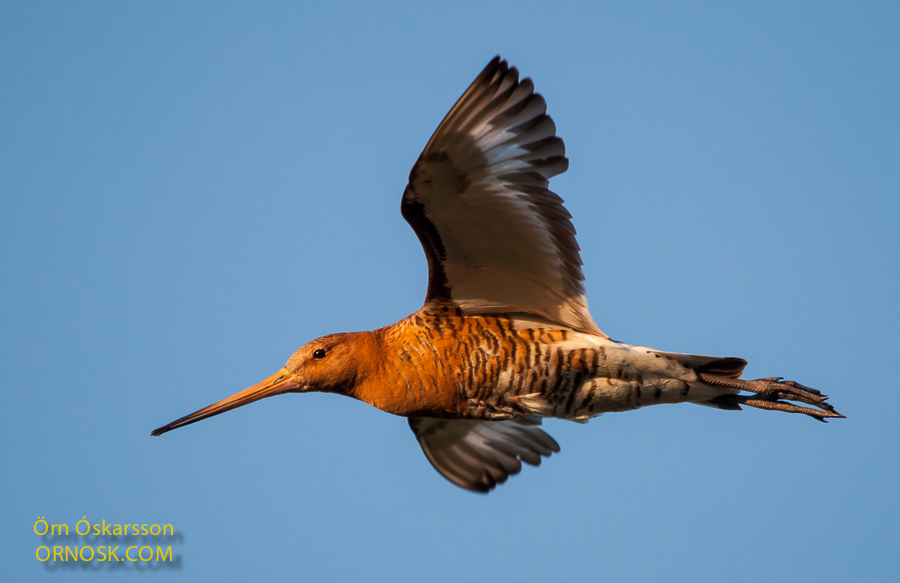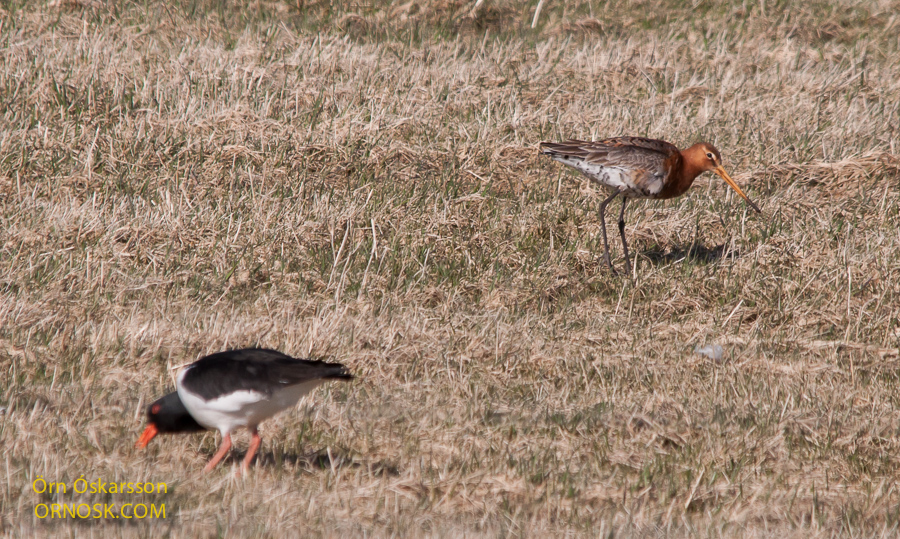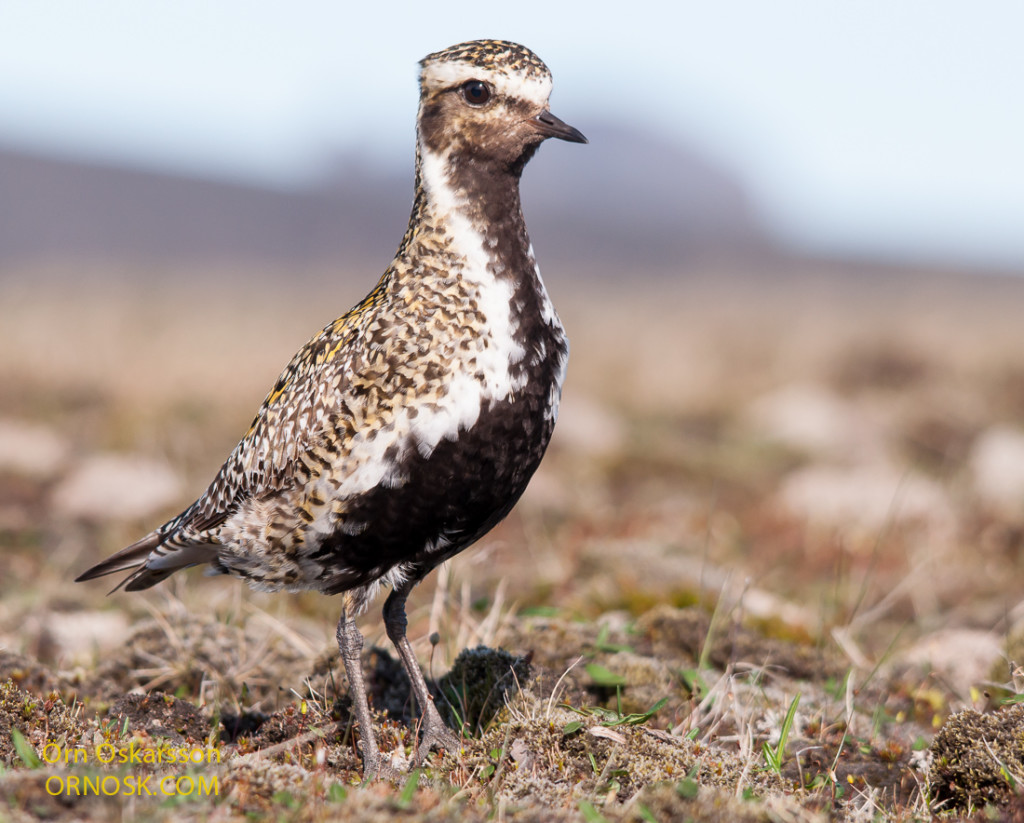
In the last few days a few Black-tailed Godwits (Limosa limosa) have been spotted near Selfoss. This morning there were 12 on the banks of Ölfusá River and a few flying by the seaside in Eyrarbakki. The Black-tailed Godwit is one of the most beautiful waders that breed in Iceland and their arrival in spring awaited with anticipation.













